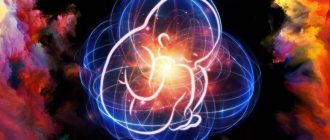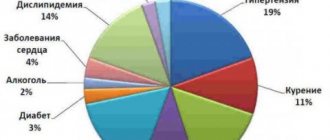Anonymously
Around the clock
Attention! The material contains information about substances, the use of which can cause serious harm to your health!
Read in the article:
- The problem of drug addiction in adolescents
- The effect of drugs on the human body
- Types of drugs and harm from them
- Teen drug addiction
- Signs of teenage drug addiction
- Treatment and prevention of drug addiction
- Adolescent Rehabilitation Center
We will select an individual treatment plan
Free consultation 8-800-200-27-23
Drug addiction is a serious chronic disease; this problem exists in many countries around the world. Consumption of any narcotic substances leads to persistent psychological and physical dependence.
Factors of teenage drug addiction
As mentioned above, the development of drug addiction in adolescents is influenced by several factors. This is precisely what causes the difficulty of independently identifying and eliminating the original cause.
Psychological factors
Psychological factors include:
- mental disorders (tendency to depression, psychopathy, aggression and others);
- low self-esteem;
- infantilism, inability to say “no”;
- lack of interest, goals in life;
- indifference to the future.
Drug use gives a teenager a false sense of confidence, detachment from reality, and a sense of “adulthood.”
Physical factors
Physical factors include the genetic abnormalities mentioned above, as well as disorders in the endocrine system. Hormonal pathologies combined with an unstable psyche can lead to a feeling of happiness, joy, and need.
Drug addiction among teenagers
- home
- Information for the public
- Health schools
- Drug addiction among teenagers
In Russia, the problem of drug use among teenagers has now reached terrifying proportions.
Just five years ago, a 16-year-old drug addict was a clinical rarity, but now teenagers make up a third of drug addicts who seek medical help. Features of teenage drug addiction
The worst thing is that taking drugs among modern youth has become commonplace, one might even say, a tradition. It seems that among today's teenagers, not using drugs is considered rude and unmodern. Teenage drug addiction, according to statistics, has become a real epidemic in the country. Data from the Russian Ministry of Internal Affairs indicate that 70% of drug users are teenagers and young people. 56% of boys and 20% of girls have taken narcotic or toxic substances at least once, and 45% of boys and 18% of girls continue to use them!
Many schoolchildren have a drug addiction manual at home and also have personal experience with drug use. And these are teenagers not from an ordinary high school, but the future intellectual elite of the country...
Drugs today are sold quite openly, and are even distributed via the Internet. And medications containing narcotic substances can be bought in pharmacies without a prescription.
Causes of drug addiction in teenagers
Why is drug addiction so common among teenagers today? First of all, because the teenager has not yet formed as a full-fledged personality, he is emotionally weak and overly curious. In addition, a teenager wants to become an adult faster, to be different from his peers and to solve problems in the easiest way. But, due to his immaturity, the grown-up child does not understand that a harmful addiction does not help solve ordinary life problems, but leads to new, more serious ones. Such a manifestation of “adulthood” as drug addiction becomes destructive for a young person.
A teenager usually takes the first dose of the drug in the company of friends, at a disco, in a club, and even at school. And he does this solely out of curiosity, having heard a lot about the drug “high”. But the young man cannot understand that this euphoria is fleeting, and drug addicts use drugs for precisely the opposite purposes - not for momentary pleasure, but to return to a state normal for a healthy person.
In many cases, drug addiction in adolescence begins due to personal problems, such as a lack of joy in life. If a teenager does not find anything good in his life, he is not happy with everything that surrounds him, he decides to try a deadly potion as a life-saving remedy. Seeing drugs as a path to the world of pleasures and a joyful life, he does not understand that getting out of this illusion is very difficult, and sometimes even impossible.
Experts say that drug addiction in children and adolescents has the most dangerous reason - pleasure. Having tried the insidious drug for the first time, the teenager experiences unusually pleasant sensations, which he strives to get more and more. As a result of repeated use of a narcotic substance, dependence appears, and not only physical, “withdrawal” in the absence of a dose, but also mental – dependence on the pleasure brought by the drug.
Often the reason for the development of drug addiction in a teenager is his friendship with peers who have experience of “drug addict” life. A teenager who has difficulties communicating with his family seems to think that his friends who are drug addicts understand them very well and, together with drugs, can replace his family and school.
The specificity of teenage drug addiction is that the reason for its development can be a completely opposite situation. The teenager communicates with a very prosperous group of friends, but strives to be a leader in it. To do this, he begins to demonstrate to his peers his various abilities, among which are smoking, drinking alcohol and drugs as signs of “adulthood.”
Stages of teenage drug addiction
There are four stages of development of teenage drug addiction.
The first stage is the first dose (or several doses) of the drug. A teenager uses a drug “for company”, provoked by more experienced peers or older children. Dependence does not arise; euphoria at this stage of teenage drug addiction is weakly expressed. Often the unpleasant physiological effects characteristic of the first use of psychoactive substances predominate. The main significance of the first stage is the elimination of the psychological barrier, the disappearance of the internal prohibition on taking drugs. At this stage of teenage drug addiction, many patients develop an idea of the safety of the drug.
The second stage is the emergence of euphoria. The teenager begins to feel euphoria in a state of intoxication and begins to consider taking the drug as a way to quickly and effortlessly get pleasure. There is no drug addiction at this stage of teenage drug addiction; continued use is due to pleasant sensations and the need to be part of a group and share its interests.
The third stage of teenage drug addiction is the development of mental dependence. If the break between doses is too long, the teenager feels irritable, anxious and restless. Now the reason for further use is not only euphoria, but also the need to eliminate unpleasant sensations.
The fourth stage of teenage drug addiction is the emergence of physical dependence. When withdrawing from a narcotic drug, very unpleasant, sometimes painful, vegetative and somatic symptoms (withdrawal) occur. Manifestations of withdrawal syndrome depend on the nature of the psychoactive substance used.
Signs of drug addiction in teenagers
The first signs of a drug addiction problem among teenagers can appear at the age of 6-7 years. If parents discover that a child at this age is smoking, this is a cause for serious concern. Smoking at such a young age indicates that the child has a tendency towards drug addiction. Therefore, parents should not hesitate, but immediately contact a psychologist before real trouble befalls the family.
Drug addiction can appear even after a single dose of drugs - this is why drug addiction is scary. The first signs that a teenager is using drugs appear a week after they start taking them. The fact that the destructive mechanism has been put into action is indicated by problems with studies, conflicts with teachers, parents and peers, late arrivals home, and absenteeism from school. The teenager is often absent from home, he makes new, dubious acquaintances with whom he conducts secret conversations.
The addict's behavior also changes. The teenager becomes irritable, rude, his mood often changes for no reason, and he strives for solitude. Sleep and appetite disturbances are observed.
There are also physical signs that indicate that a teenager is addicted to drugs:
- constricted or dilated pupils, regardless of lighting;
- slow and slurred speech;
- impaired coordination of movements;
- very pale skin;
- poor memory and depression.
All these changes in the teenager’s condition and behavior should alert his parents.
Consequences of teenage drug addiction
Drugs have an extremely negative effect on the immature reproductive system of a teenager. Every third girl who takes heroin stops menstruating; in other cases, menstrual irregularities are usually observed. With teenage drug addiction, both girls and boys experience pathological changes that lead to infertility and increase the risk of developing fetal deformities. Due to protein metabolism disorders, normal muscle growth is disrupted. As a result of intoxication, liver damage and neurological disorders occur. The psyche, volitional and emotional spheres suffer. Teenage drug addiction entails an increase in criminal activity. To get money to buy drugs, teenagers may start stealing, robbing, engaging in prostitution, or becoming petty dealers distributing psychoactive substances among their peers. The indiscriminateness in choosing sexual partners characteristic of teenage drug addiction results in unwanted pregnancies, the spread of syphilis, HIV, gonorrhea and other sexually transmitted infections. The risk of developing syphilis, HIV and hepatitis B increases even more with injection use.
Prevention of drug addiction among adolescents
Smoking, alcoholism, drug addiction in the modern world have become too young. There is no guarantee that just yesterday a modest and polite child from a prosperous family will not turn into a drug addict or alcoholic. But you need to try to avoid this problem.
What should be done to prevent a teenager from sliding to the bottom, turning into a drug addict unnecessary to society, and not exchanging the joys of life for the illusion of drug “magic”?
First of all, the prevention of drug addiction in adolescents, as well as other bad habits, comes down to the personal example of his parents. What a child sees from an early age, he considers the norm of life. How parents feel about smoking, alcohol, what kind of people come to visit, how communication and celebration of holidays take place - all this is deposited in the child’s mind and forms a certain model of behavior in him.
Many teenagers view drugs and alcohol as a way to relax and escape from stressful reality. But the task of parents is to counter such harmful relaxation with other ways of solving problems, and to explain to the teenager that going into the illusory world is instant pleasure, and it is not worth ruining a young life.
The influence of teachers and the media is of great importance in the prevention of teenage drug addiction. Young people must understand that drug addiction among teenagers is the path to human extinction. And it is better to prevent such a problem than to then try to get rid of it.
If you want to protect your child from drugs, build your relationship on trust and sincerity. Talk with your teenager about serious topics about health and life without harmful addictions. Explain that drugs are just tinsel, underneath which there is emptiness.
Stages of teenage drug addiction
There are three stages of teenage drug addiction.
- A child tries a drug
(usually for a company). If the first dose feels good, there is a good chance he will repeat the experience. At this stage, psychological dependence arises.
- Gradually the teenager gets involved
. To alleviate the withdrawal symptoms, which indicate the onset of physical addiction and begin to manifest themselves at this stage, he is looking for ways to get the next dose.
- Persistent addiction develops
. Each time the withdrawal becomes harder and more dangerous. The drug has become part of the metabolism, and in order for the body to exist, an increase in dosage is required.
There is only one result - death.
The effect of drugs on the human body
The harm that drugs cause to the human body is enormous. A person who uses drugs undermines his health at a very fast pace. From the moment a person becomes addicted to drugs, his life expectancy is on average 7 to 10 years. Addiction is not limited to physical cravings. Much more terrible is psycho-emotional attachment, which destroys the personality. As a result of this, a person is irrevocably transformed into a slave creature without willpower, wanting only one thing - the next dose of drugs.
Find out treatment recommendations without leaving home for free
To select a treatment plan, you just need to leave a request, we will contact you to select the time and specialist you need
Submit your application
Prevention of drug addiction in adolescents
Prevention of drug addiction should begin in the family, from the very birth of the child. Parents should pay attention to the following points:
- creating a comfortable psychological environment in the home;
- renunciation of violence and pressure on the child;
- formation of interests in the world, positive life attitudes;
- training in work, responsibility for actions, thoughts;
- showing a positive attitude towards the world by example and so on.
It is important that the child in the family is not only listened to, but also heard. So that he does not have the desire to share his problems with “comrades in misfortune” by escaping reality into drug intoxication.
Drug addiction problem
Currently, the problem of drug addiction has become so obvious that its nature has taken on the form of a real social disaster. Today, drug addiction is already observed among children and adolescents, which is generally unacceptable. However, many young people from year to year fall into the trap of the so-called “drug fashion,” from which it is very difficult to escape, and sometimes simply impossible.
The following is happening in the world: mafia structures that manufacture and sell narcotic substances are selling them in huge volumes and at increasingly affordable prices. In recent years, so-called “soft drugs” have become widespread, attracting naive people who underestimate the power of their influence. At first, it seems to them that they manage to control themselves, that they can stop using drugs at any time. However, most people who are already hooked on drugs fail to do this.
The problem is further aggravated by the fact that drug addiction treatment is not yet so effective as to achieve a 100% result. This disease has also become closely linked with such serious problems as sexually transmitted diseases, AIDS, and hepatitis.
HOW TO MOTIVATE A DEPENDENT FOR TREATMENT
A very significant factor in the formation of addiction is family. There is an opinion in society that a child can only become a drug addict in a dysfunctional family. This is wrong. People from different social strata of the population turn to us for help. For example, we see a large percentage of people with addiction problems in families where the mother is a teacher and the father is a military man. In families of parents who completely devote themselves to work and business, children with addictive behavior are also often found. Every third person suffering from drug or alcohol addiction comes from an incomplete family, or in the family one of the parents is a stepfather or stepmother.
Based on our experience of working with families of addicted people, we conclude that the problem of drug addiction or alcoholism can appear in every family that is dysfunctional. Therefore, it is important to pay attention to relationships in the family, to showing love for your children, acceptance and respect.
How can you tell if a teenager is taking drugs?
Symptoms of drug addiction in a teenager can vary, depending on the type of substance used. In general terms, the following signs can be identified:
- red eyes, dilated or constricted pupils;
- unnatural complexion, ulcers on the skin;
- appetite disorders;
- problems with the gastrointestinal tract;
- constant nasal congestion, unhealthy cough;
- excessive thirst;
- increased sweating;
- untidiness in clothing and personal grooming;
- lie;
- decline in academic performance;
- disrespect for loved ones;
- sleep disorders.
Signs of drug addiction also include unnatural gait, changes in facial expressions and speech.
Signs of teenage drug addiction
First. When a teenager shows signs of drug addiction, his appearance changes: pallor or redness appears on the skin, the whites of the eyes are usually red, and the pupils are either dilated or, conversely, constricted. In addition, characteristic symptoms such as chills, pain in the extremities, and skin that may be either dry or too sweaty appear.
Second. A teenager with drug addiction begins to experience characteristic changes in his behavior: the teenager may leave home for a long time, he begins to lie to his parents, he makes new friends. Addiction can also manifest itself in the desire to sleep during the day and stay awake and walk at night. At school, such teenagers' performance decreases, and their condition is similar to intoxication.
As a rule, it is worth talking about the likelihood of drug addiction when the above signs become cyclical. The consequences of drug addiction in adolescence can be extremely disappointing.
The entire list of various negative pathologies can be experienced and felt by adolescents in the case of drug addiction. These include convulsive phenomena, hepatitis, blood poisoning, AIDS, inflammation of the veins, and so on. Drugs affect a teenager’s psyche, causing depression and thoughts of suicide.
Treatment of teenage drug addiction in Moscow
When a teenager is in the first stage of drug addiction, relatives can still have some influence on him. The second and third require qualified drug treatment and psychotherapeutic assistance with subsequent rehabilitation.
Classic detoxification and UBOL
Carrying out detoxification - a procedure aimed at cleansing the body of toxic substances - is a mandatory and primary activity. It is carried out mainly with the help of a drip, and in severe cases, especially those associated with taking opioids, it can be in the form of UROD (ultra-rapid opioid detoxification).
Help for parents of dependent children
Addiction is a family disease, which can only be overcome with mutual understanding and mutual assistance. The rehabilitation program in specialized centers is aimed at actively involving the teenager’s parents in the process. Family members of an addict undergo a therapeutic course to overcome codependency. Classes can be taken online or in person in the office.
Enhanced poisoning therapy
7,500 pcs.
- Dropper volume 1500 ml
- Visit of a narcologist
- Patient examination
- Consultation with a narcologist
- Detoxification
- Doctor's orders
- Medicines for 3 days
- Monitoring the patient's condition
Order a service Medications administered to a drug addict vary depending on the type of drug. The dropper may contain: antidote, sedatives, analgesics, sorbents, and so on.
Medication recovery from teenage drug addiction
Medications are used not only to relieve withdrawal symptoms. After cleansing the body, a drug addict may be shown the following groups of drugs:
- antidepressants;
- antagonists, opioid receptor blockers;
- cardiovascular;
- tranquilizers;
- vitamin complexes.
In addition, there is medication coding for the drug Naltrexone, which is taken in the form of tablets or sutured into the muscle in the form of a capsule.
Psychotherapeutic treatment
Psychotherapeutic work is carried out in different forms and methods: these can be conversations, group or individual sessions, family consultations, coding and others. What tactics will be required in this or that case is decided by the specialist. The impact on the psyche usually begins after detoxification. A greater effect is achieved if treatment takes place in a hospital setting.
Rehabilitation of drug addicted teenagers
The rehabilitation period also includes treatment with medications and work with a psychologist. This is a consolidating stage, the purpose of which is for the patient to fully understand his mistake and take responsibility for his behavior, words and thoughts. At the rehabilitation stage, a person must consciously reject drugs and learn to have a positive attitude towards life and society.
The rehabilitation period ends with resocialization - learning to build relationships with others, to live in a world full of temptations, and the ability to resist them. A properly structured rehabilitation program includes work and communication with loved ones, as well as support for clinic graduates after discharge.
Types of drugs and harm from them
1. Hemp. It is also called “marijuana” or “anasha”. This narcotic substance is used in the form of smoking, and regular use can lead to severe consequences, such as damage to the lungs, liver, pathologies of cardiovascular activity, and impaired brain function. The person becomes apathetic, depressed, and slow to think.
2. Opiate drugs. These types of drugs include types such as heroin and opium, morphine and codeine, poppy straw and methadone. The harm that these types of drugs can cause to a person is incredibly enormous. Firstly, the functioning of the brain and heart is disrupted, the respiratory function of the lungs becomes pathological, bone tissue and teeth are destroyed. If drug injections occur in a non-sterile form, this leads to blood poisoning, and purulent-infectious complications may also begin to develop. Other serious consequences are possible, such as infection with AIDS and various sexually transmitted diseases, and hepatitis. The liver will also suffer, as a result of which it will degenerate and the drug addict’s immunity will be nullified. Even the simplest cold will become unbearable in its severity.
3. Barbiturates (or otherwise – reladorm). Taking these narcotic substances, they will affect the cardiovascular system, liver, brain activity will also be affected, and psychosis will also be observed.
4. Psychostimulants. These include: ephedrine and ecstasy, amphetamine and cocaine, salt, etc. Harm from taking psychostimulant drugs causes a severe form of arrhythmia, which can cause cardiac arrest, general exhaustion of the body, and dystrophy of the heart muscle. Drug addicts begin to see hallucinations, they experience depressive symptoms that drag on for a long time, which can result in suicidal desires.
5. Hallucinogens. These are drugs such as LSD and poisonous mushrooms, etc. Their influence negatively affects the functioning of the brain and, accordingly, the human psyche. The patient will experience mental pathologies such as various fears and psychoses, as well as hallucinations. The person becomes mentally ill.
6. Volatile substances. These include the well-known various paints and acetone, Moment glue and gasoline. Volatile substances are highly toxic; as a result of their influence, body cells die.
The price of treatment for teenage drug addiction at Narkolog-24
Each case of teenage drug addiction is individual. One patient requires urgent hospitalization and resuscitation measures, another needs outpatient treatment and work with a psychotherapist, a third needs a completely different scheme, and so on. Therefore the cost will vary.
Sign up for an initial consultation, our specialists will select a treatment option that is suitable specifically for your situation. In addition, if you are worried about how to protect a teenager from drugs and alcoholism, an experienced narcologist and psychologist will tell you how to behave correctly with a child, what you should and should not say and do, and much more.
FAQ
How to find out what a teenager is using?
If there is a suspicion that a student has started taking drugs, the simplest thing a parent can do to confirm or refute their suspicions is to conduct a rapid drug test, which can be purchased at any pharmacy. For analysis, it is necessary to collect the teenager's urine and place test strips in it.
What are teenagers using now?
Among teenagers, the most popular are psychostimulants and the so-called spices - smoking mixtures that contain various narcotic drugs of plant and synthetic origin. Such “children's drugs” are characterized by rapid addiction and extremely destructive effects on the body.
How to protect a teenager from drugs?
If you are concerned that your teen may become addicted to drugs, try to adhere to the following rules:
- Be attentive to the child, his problems, communicate more with him, surround him with warmth;
- Try to always listen to the teenager’s point of view, let him have his own point of view on certain issues;
- Keep an eye on your teenager’s social circle, if he has made unwanted acquaintances, talk to him about why you don’t like this person and gently try to stop their communication, but without strict prohibitions;
- Organize your child’s free time as much as possible, strive to develop his creativity, and encourage new hobbies.
Recommendations for dealing with addiction in adolescence
A teenager cannot overcome addiction on his own. Relatives also cannot provide proper care and treatment, or even adjust their behavior correctly. To successfully recover from drug addiction, you must definitely contact a narcologist.
Treatment of teenage drug addiction should be structured and consistent, including educational and medicinal components, and parent training.
There are no former drug addicts. This is a life-long test, so only specialists from a drug treatment clinic will help you get the right attitudes and understand the principle of building resilience. Of course, there are also paid services, such as a visit by a narcologist to your home. But emergency drug treatment is a good solution in a crisis situation, and the course of full treatment cannot be limited to 1-2 visits.










